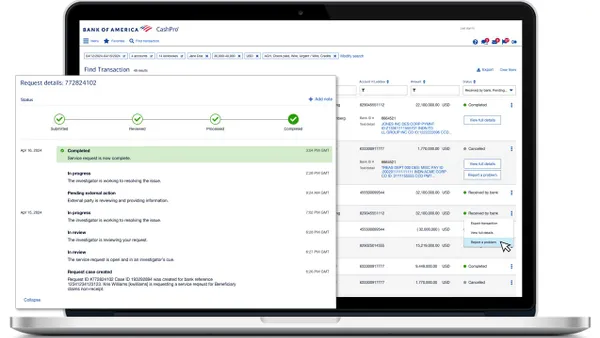The race to adopt, implement and derive value from generative AI is very much underway. The financial services industry in particular is poised to be a leading investor and adopter of this transformative technology.
Artificial intelligence isn’t novel for banks. The industry has been using machine learning — a subset of AI — since the 1980s. But publicly accessible generative AI, with its ability to democratize insights using conversational language, has pushed businesses to think more holistically about an enterprise AI strategy over the past two years. Now organizations need to shift from the art of the possible to real, tangible AI implementations.
Conversational assistants and customer copilots that are part of the broader gen AI strategy have the potential to make a real impact on revenue and redefine the customer experience. But there are other opportunities that are far more valuable — use cases that can be instrumental to bringing enterprise AI to life. And they start with your organization’s data.
Three AI-powered data use cases to lay a sturdy foundation for enterprise AI
Today's data management process at large banks can be manual and extremely resource intensive. AI can help automate or augment a bank’s data and business intelligence teams with efforts to modernize transformation processes across the full data lifecycle — from ingestion through analysis.
Automate Business Data Ingestion
Increasing data demand across banking has posed challenges. Data teams face resource constraints when navigating the patchwork of data structures and different schemas, which now include data, text, images, videos and audio.
By putting AI at the beginning of the data lifecycle rather than relying on manual work, teams can build more automated and trusted data pipelines. These capabilities can help organizations improve data freshness for risk model calculations, detect data quality gaps in financial reporting, more quickly conduct sentiment analysis or enrich first-party data.
Secure Data Governance
Governance is crucial in a highly regulated industry like banking. The right data platform can scale observability with data, model and usage governance. Chief data officers can handle AI-based threat detection and alerts, and users should be able to evaluate, monitor and debug models and apps across the full lifecycle. This allows teams to address red flags quickly and demonstrate compliance with AI regulations.
Implement LLMs for Data Analysis
Large language models (LLMs) accelerate analytics in two important ways. First, LLMs power numeric co-pilots. This empowers business users to ask and answer analytical questions. Second, LLMs enable data scientists to extract and create numeric analytics from text, deploying as textual agents. This was already possible with classical natural language processing, but LLMs make it faster, more customizable and more grounded in business logic.
To build out these use cases, banking leaders must have a strong data foundation — access to the right data and the right data platform. Then firms can construct a robust enterprise AI strategy. The following three principles should underpin long-term planning.
Three guiding principles for an enterprise AI strategy
Efficiency Matters
Organizations should aim for a unified architecture that makes LLM deployment efficient from a cost, governance and security standpoint. By relying on a unified platform, enterprises can maintain one governance and security posture for structured and unstructured data, vectorized and indexed data, LLMs and gen AI applications. Data is not ingressed and egressed out for separate pieces in this stack, which means projects can go from idea to impact much faster.
Trusted Data
LLMs and the gen AI applications that they fuel are powerful and convincing. But to be effective, they must be trusted across three crucial axes: models, data and people. Copilots that answer natural language questions must use models that can accurately interpret those questions, generate and run SQL, and test for results. The data that is served to LLMs must be the most relevant for any particular question — a challenging result when working across enterprise data. In addition, people are new to these tools. Before enterprises can scale access to them, the right guardrails must be in place.
Ease of Implementation
A well-architected enterprise AI strategy should be easy to implement. AI itself is not easy, but accessing best-of-breed models, building chat interfaces and connecting to vectorized data should be. This allows enterprises to focus on the business and commercial outcomes that should be the output of an effective AI strategy.
With the above in mind, leaders in banking and across financial services will be better equipped with the tools to deploy enterprise AI at scale across their organizations.










